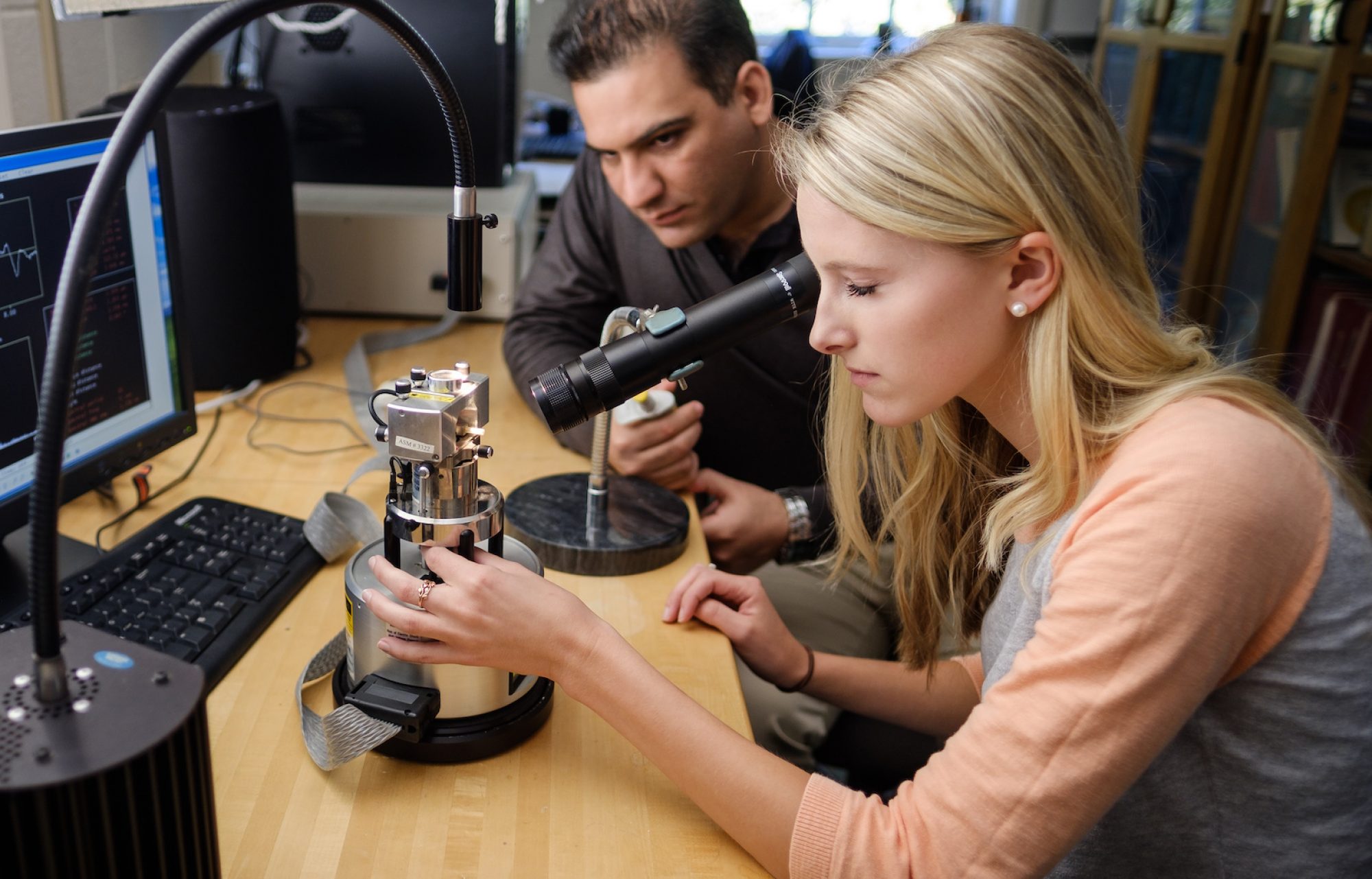Physics demo videos: work, energy, linear and angular momentum, conservation laws
Demonstration videos illustrating key concepts of energy, angular momentum, and conservation laws.
For other videos from our demonstration collection, please visit Physics Demo Videos. You may also wish to view our Video Lecture Series for short tutorials on topics from first year physics.
[Note: if you get an error message on playing a video, try clearing your browser’s cache and cookies, or try viewing in an incognito window.]
Work and Conservation of energy | |
| Loop-de-loop. The ball begins at the top of the long end with potential energy. At the bottom of the hill, the energy is all kinetic. At the top of the loop and the top of the short side, the energy is split between potential and kinetic. |  |
| Nose Basher Pendulum: 3rd person view. A pendulum can never have more energy than what was originally put into the system. A pendulum released at a person's nose will not hit the person on the return swing. |  |
| Nose Basher Pendulum: 1st person view. A pendulum can never have more energy than what was originally put into the system. A pendulum released at a person's nose will not hit the person on the return swing. |  |
| Roller Coaster. At various points on the track, the car will have the same total energy less losses to friction, but it will be split into kinetic and potential energies dependent on its height and velocity. The higher the PE, the lower the KE and vice versa. |  |
Collisions and conservation of momentum and energy | |
| Double Ball Bounce. A tennis ball is held in contact with a basket ball, then the two are dropped as one. Why does the tennis ball rebound so high? Take 2. | 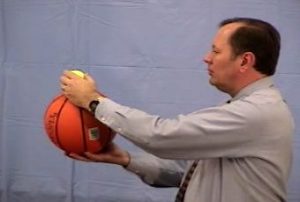 |
| Elastic Collisions, equal mass. The momentum of the moving cart is transferred to the cart at rest. |  |
| Elastic collisions, big + small mass. When the big mass strikes the stationary small mass, a portion of the momentum is transferred. |  |
| Elastic collision, small + big mass. A small mass cart strikes a cart of larger mass. |  |
| Exploding Carts, equal mass. Because these carts are of equal mass, they will have the same velocities and momenta after release. |  |
| Exploding carts, unequal mass. Two cars of unequal mass fly apart. Because these carts are NOT of equal mass, they will NOT have the same velocities after release. Instead, their velocities are inversely proportional to their mass; i.e. the bigger mass will have the smaller velocity. Their momentums will still be equal. |  |
| Inelastic Collisions, equal mass. In all cases, the two carts stuck together after the collision will have a momentum that is equal to the combined momentum of the two carts before the collision. |  |
| Inelastic collision, large hits small. A cart of large mass strikes and sticks to a cart of smaller mass. |  |
| Inelastic collision, small hits large. A cart of small mass strikes and sticks to a cart of larger mass. |  |
| Newton's Cradle, 1 hits 1. One ball swings and hits another ball that is initially stationary. |  |
| Newton's cradle, 1 hits 8. One ball collides with a stack of 8 balls. | 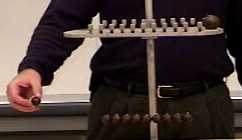 |
| Newton's cradle, 2 hit 7. Two balls swing into a stack of seven balls. | 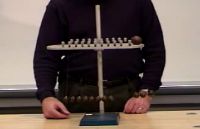 |
| Newton's Cradle, 7 hit 2. Seven balls swing into a stationary stack of two balls. |  |
| Newton's Cradle, 8 hit 1. Eight balls swing into a stationary ball. | 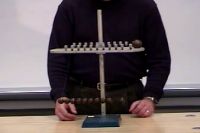 |
| Newton's Cradle, big hits small. A large ball swings into a small ball. | 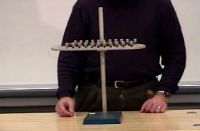 |
| Roller blade collisions. This demo is a combination of explosive collisions and inelastic collisions. Each roller blader gains momentum with each toss AND catch of the pillow. |  |
Angular Momentum | |
| Person on rotating platform. Due to the conservation of angular momentum, when the rotating person brings his arms and the masses closer to his body, he will rotate faster. We have all seen this in figure skating. | 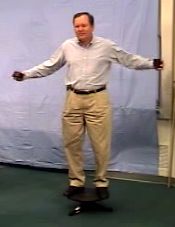 |
| Bicycle wheel and rotating platform. The platform only isolates the system from torques about the vertical axis, so the vertical component -- and only the vertical component -- of angular momentum is conserved. | 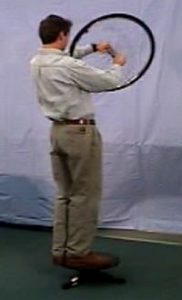 |
| Bicycle wheel and rotating platform #2. In this video, the axis of rotation of the wheel is initially vertical. Once again, the vertical component of angular momentum is conserved. | 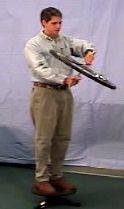 |
| Bicycle wheel gyroscope. Watch what happens when the bicycle wheel is suspended by a rope tied to one end of the axle. Why? Hint: torque and angular momentum are vectors. | 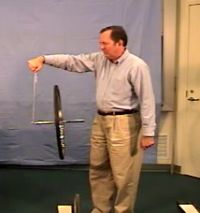 |
